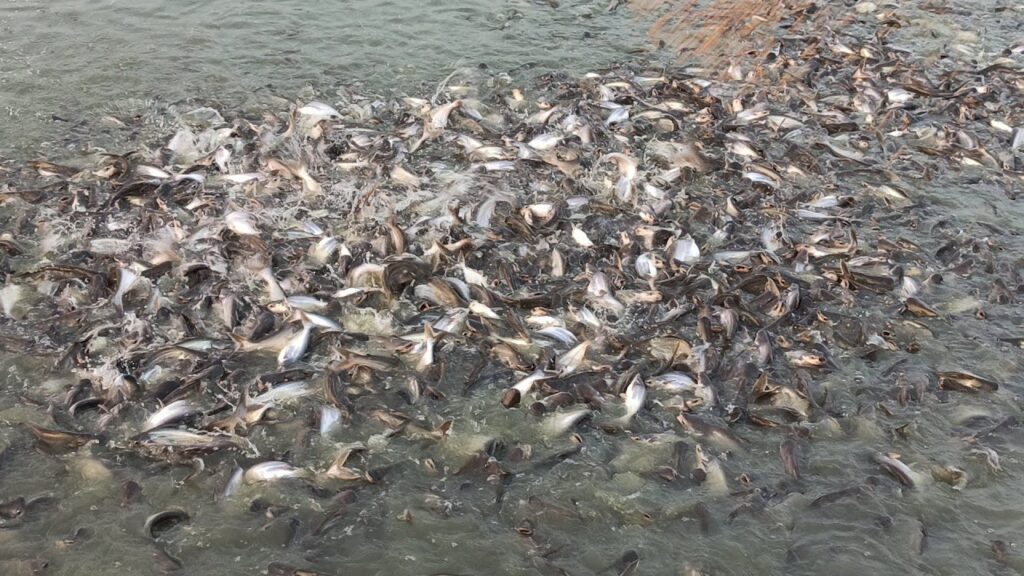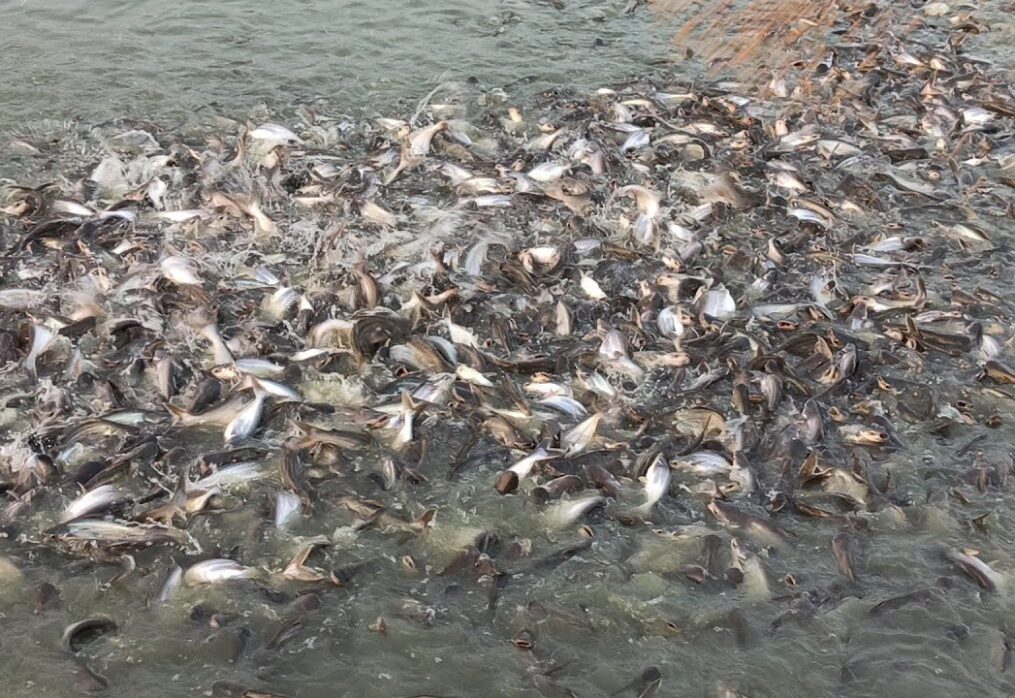Pangasius Fish Farming In India
Pangasius Fish Farming In India
If you want to Start Pangasius Fish Farming In India as commercial basis , then this article will be helpful to you . In this knowledge based article you will get step by step guide , fish farming plan, project information & Pangus farming business report to start commercial & profitable Pangasius Fish Farming ( पंगेशियस मछली पालन ) in India .
Introduction :
The ponds and reservoirs of our country are very suitable for Pangasius fish farming. Various species of fish can be profitably farmed with Pangasius for commercial fishing.
Farming method of Pangasius fish:
The method of fish farming depends on the characteristics of the pond or reservoir, environmental conditions, water control management, capital, obtaining quality fry, market management etc. Keeping these things in mind, it is necessary to decide how the cultivation method will be. Today we will learn about Pangasius monoculture or intensive farming.

What is Pangasius monoculture or intensive farming in India?
In this method, Pangasius Seeds are stocked in high density to produce more in less time. In this case, more profit can be made by using artificial food rich in meat. 15 to 20 tons of Pangasius per hectare can be produced through improved cultivation management.
8 to 10 cm per hectare in monoculture. 20,000 to 25,000 Pangasius Seeds of size can be stocked. However, in this case, it is possible to increase production and profit by storing last year’s seeds.
Selection of ponds for Pangasius Fish Farming in India :
Pangasius farming ponds are better if they are rectangular. The bottom of the pond should be leveled well. The water depth of the pond should be kept between 1.5 to 2 meters. Loamy soil ponds are best for Pangasius farming .
Deep or shallow tube wells should be kept near the pond so that water can be supplied quickly in case of emergency. Necessary repairs should be done in advance so that the pond does not break during monsoon or excessive rain. Above all the pond should be chosen in a place where the communication facilities are good and there are adequate safety measures.
Pond Preparation for Pangasius Fish Farming in India:
The next step after choosing a pond is to prepare the pond well. Now let’s know some important information about pond preparation. After control of aquatic weeds, control of harmful insects, monster fish and unwanted animals and repair of banks and bottoms, ponds should be prepared for cultivation by applying lime and fertilizers respectively.
The work should be done as usual (see the section on preparation of farming ponds). The same applies to lime and fertilizer application as for many fish. However, it is better not to apply organic fertilizers in the pond if Pangasius is cultivated in high density.
Because the amount of feed that is applied in Pangasius farming, the environment is already fertile due to the excrement of Pangasius and enough natural food is grown in the water. Many times natural overfeeding causes fish problems. Fertilizer application should be stopped in case of farmers who will cultivate Pangus in high density with floating feed.
Pangasius Fish Seeds Stocking :
It is advisable to initiate contact with a reliable nursery/hatchery owner for good fry during the preparation of the fry stock pond. Good management and good feeding can lead to good production of fish, which may not always be the case. A prerequisite for good production is good quality Pangasius Fish Seeds. Not all hatcheries have equal hatchery quality due to inbreeding problems.
Buy Pangasius Fish Seeds from good and reliable Pangasius Fish Seeds hatcheries in India ” Bangla Krishi Khamar ” . Bangla Krishi Khamar is the No. Fish Seed Supplier providing Pangasius Fish Seeds at All Over India basis , know more.
A slightly larger fry (6-7 inches long) is better for stocking in ponds. Many stock larger size chicks (100-150 g weight/ each) to get higher yields. The fry should be stocked in the pond at low temperatures in the morning. The pups must be conditioned (acclimated) to the pond water before being released.
Feeding in Pangasius Fish Farming in India :
The natural food produced in Pangasius farming ponds is not sufficient for the expected yield of fish. Therefore, a balanced diet must be ensured. It should be remembered that if a certain amount of feed is not provided daily during the cultivation stage, the production of Pangasius will be hindered. The amount of fish feed depends on the age and body weight of the fish.
After 15 days the weight of a few fish should be checked as a sample to see if the fish is growing properly. It is best to provide fixed amount of food in 6 to 8 places as per the size of the pond. Feed should be delivered in the form of sprinkles and supplementary food balls. If the Feed is applied evenly divided into 2 to 3 times instead of giving it at once, the effectiveness of the Feed increases a lot.
Disease Management of Pangasius Fish:
Pangasius is a very hardy fish. Still pangas disease can occur. It is better to develop immunity before disease occurs. In that case – pond preparation step should be done properly. Healthy – All disease-free Pangasius Fish seeds should be stocked. Generally, due to poor farming management and environmental stress, Pangasius fishes are attacked by protozoa and bacteria.
Pangasius Fish Harvesting :
Based on the market demand, after 5-6 months of fish stocking, when the average weight of Pangasius is 500 to 600 grams, then 50% of stocked fish has to be sold in the market. This allows the remaining fish to grow faster.
